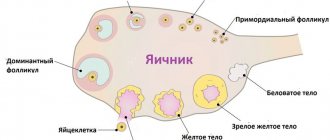Along with pleasant feelings, women during pregnancy often experience anxiety about the health of their unborn baby. After all, they often encounter various kinds of ailments, and in such cases they cannot always resort to the help of medications, many of which cannot be used during pregnancy. If women experience pain in the lower abdomen, Papaverine is recommended during pregnancy, which has long proven itself to be effective. This drug allows you to relax muscles when spasms occur and is absolutely harmless to the fetus.
Is it possible to take Papaverine with uterine tone?
In the 1st trimester of pregnancy, using medications without a doctor’s prescription is strictly prohibited. During this period, active formation of the embryo occurs. Any medication used without prescription can cause irreversible changes and harm the baby.
In the 2nd trimester, the baby is already protected by the placenta. It prevents toxic substances, including drugs, from entering the fetus’s body. Despite the active functioning of the placental barrier, it cannot cope with all toxins. Therefore, it is also not recommended to use medications on your own at this time.
Before giving birth, doctors strongly recommend that you stop taking any medications, since their active substances can pass into breast milk.
It is impossible to give a definite answer to the question of whether taking Papaverine for uterine tone during pregnancy is acceptable. If the medication is prescribed by a doctor, then you can definitely use it. You should not resort to taking this medication on your own. Despite the fact that it effectively copes with increased uterine tone, in some cases its use can be harmful.
Taking medications with papaverine for uterine tone is strictly prohibited for women with:
- glaucoma;
- atrioventricular block;
- severe renal failure;
- hypersensitivity to components;
- depression of respiratory function.
Papaverine analogs
The most common drug that can replace Papaverine is No-shpa. It has the same pharmacological properties. No-spa is also not dangerous to the fetus and can be used during pregnancy. Its distinctive quality is the more effective action of the tablets, which can eliminate not only spasms of the reproductive organ, but also headaches.
Both drugs have a similar active substance, if the expectant mother is individually intolerant, she needs to use other similar medications. Magnesium B6, which is also prescribed to women with uterine hypertonicity, will help get rid of cramps. This drug will be more effective if a woman’s body is deficient in magnesium, which often causes cramps. In this case, papaverine will relieve pain and eliminate spasms, but will not be able to compensate for the lack of microelement. Pregnancy is not only an extremely joyful event for a woman. This condition requires the mother to be attentive and concerned about her health and the normal development of the baby. A woman should be responsible for all manifestations of any disease and immediately contact a doctor, since self-diagnosis can lead to undesirable results. Papaverine during pregnancy allows a woman to get rid of unpleasant painful sensations caused by spasms of the muscles of the uterus and protect herself from the threat of miscarriage or premature birth. Using this drug, the expectant mother can be absolutely sure that it will not harm the fetus, but will contribute to its normal development.
X characteristics of the drug
The drug Papaverine is sold in pharmacies without a prescription and has an affordable price. Therefore, many pregnant women with uterine tone are in a hurry to buy it and start using it. The drug is available in several dosage forms:
- suppositories for rectal use;
- tablets for internal use;
- solution for administration by injection.
The main active ingredient of the drug is the component of the same name - papaverine hydrochloride. The medicine is an antispasmodic that can have a hypotensive effect.
Thanks to the use of the medication, the following effect is achieved:
- muscle tension decreases;
- the muscles of the digestive tract relax;
- blood vessels dilate;
- blood circulation and nutrition of internal organs improves;
- blood pressure levels decrease;
- the work of the heart muscle is stabilized.
Providing for use
The use of Papaverine for uterine tone during pregnancy is indicated for those patients who need it and have no contraindications for this therapy. The medicine is prescribed for the tone of the anterior and posterior walls of the reproductive organ. It is also recommended to use it to prevent contractile activity if there is such a risk.
It is necessary to take the medication for patients who are prone to increased tone or have a history of repeated pregnancy terminations due to this condition.
According to the instructions for use, the medication can be used at any time for uterine hypertonicity. It is also prescribed in the following cases:
- conditions caused by muscle spasms in different parts of the digestive tract;
- vasoconstriction;
- blood pressure surges;
- pain in the muscles of the abdominal wall;
- pain in the heart area;
- bronchial spasm accompanied by a painful cough.
Contraindications for use and adverse reactions
The list of contraindications to the use of myotropic antispasmodic includes the following conditions:
- thyroid diseases;
- disorders of the liver and kidneys;
- high intraocular pressure;
- acute bronchospasm;
- increased sensitivity of the patient's body to the active substance.
The following adverse reactions are often observed during the use of the medication:
- sustained decrease in blood pressure (hypotension);
- heart rhythm failure;
- symptoms of intoxication;
- lower abdominal pain;
- digestive disorders;
- rash on the skin;
- increased sweating;
- dizziness.
If the listed symptoms appear, a woman should consult a doctor.
Rules for taking for uterine tone
For use with uterine tone, Papaverine is most often prescribed in the form of rectal suppositories. Less commonly, the medicine is prescribed for injection. Expectant mothers are almost never prescribed a tablet form of the medication, since it acts more slowly and has a major effect on the tissues of the digestive tract.
Papaverine suppositories are produced by various commercial manufacturers. However, all drugs have identical composition and mechanism of action. Rectal suppositories have a fat base that quickly dissolves under the influence of elevated body temperature.
The basic rule of administration for eliminating uterine tone is that suppositories are administered after cleansing the intestines. Expectant mothers need to monitor the functioning of the digestive tract and the regularity of its emptying. Constipation and increased flatulence can become an independent cause of tone. The introduction of suppositories is carried out up to 3-4 times a day. The exact amount is determined by the doctor after assessing the severity of the patient’s condition. A single dose of the drug is contained in one suppository.
In the second and third trimester of pregnancy, Papaverine suppositories are also used. However, if there is a threat of premature birth, gynecologists begin therapy with an injectable form of the medication. The solution is administered intramuscularly, subcutaneously or intravenously. After the woman reaches a stable condition, the medicine is administered in the form of suppositories.
Tablets are prescribed for uterine tone quite rarely. This is due to the fact that Papaverine is able to relax smooth muscles. Expectant mothers often have problems with the functioning of the digestive tract - heartburn, reflux, sour belching. The pills relax the sphincter between the stomach and esophagus, making these conditions worse. Taking the tablet form of Papaverine is recommended only in cases where the use of other types of medication is not possible.
Dosage and duration of use
All women carrying a baby should take medications only on the recommendation of a doctor. Papaverine can also be used during pregnancy after it has been prescribed to the patient. The doctor, having previously assessed the condition of the expectant mother, will be able to select the most suitable form of medication, and will tell in detail what dose of Papaverine a woman can take.
Doctors rarely prescribe the drug in tablets, since this form of the drug does not have a quick effect. The tablets are taken by the patient for a long period. It is recommended to use them one at a time 4 times a day, at regular intervals. You need to drink them two hours before meals. If the patient is prescribed a three-time dose, then the tablets are taken every 5 hours. The duration of treatment depends on the condition of the expectant mother and the results obtained after using the drug. Papaverine for uterine tone during pregnancy can be prescribed to a woman in the form of injections as intramuscular or subcutaneous injections. You can do them at home yourself. If the uterus is hypertonic, the patient may be prescribed intravenous injections, which are done only under the supervision of a doctor. Often, expectant mothers are prescribed Papaverine suppositories. They are quite easy to use and effective. Before prescribing them, the doctor must explain to the patient where to insert Papaverine during pregnancy, and what dose should be used, which depends on the complexity of the disease. Suppositories are often prescribed one at a time, 2 or 4 times a day. They are inserted into the rectum at regular intervals. The rectal opening should be clean, which will increase the absorption of the drug.
The principle of action of papaverine
The mechanism of action of the drug is determined by the active component that is included in its composition. You should pay attention to the drug, since some preparations contain papaverine hydrochloride as one component, while others contain additional substances.
After use, the medicine is quickly absorbed into the systemic circulation. The active substance passes through epithelial tissues and mucous membranes. It is 90% bound to plasma proteins. After undergoing biotransformation in the liver, the amount of the active ingredient is halved after about 2 hours. This means that soon after using Papaverine, the tone of the uterus may reappear.
Based on how often the activity of the reproductive organ increases, the doctor sets an individual interval between doses - from 2 to 12 hours.
The medication helps reduce the contractile activity of smooth muscles throughout the body. At the same time, the drug does not have a negative effect on the biological processes occurring in the child’s body. On the contrary, the mechanism of action of the antispasmodic allows you to relax the muscular layer of the uterus and maintain pregnancy. The medicine is not able to interfere with the functioning of the central nervous system, so it can be used by expectant mothers even in the first trimester.
It is worth noting that the antispasmodic provides symptomatic assistance with uterine tone. The medicine relaxes the muscles, but does not eliminate the cause that caused this condition. The use of Papaverine should not be the main point in treatment. To normalize a woman’s condition, it is necessary to eliminate the provoking factor.
Why is papaverine prescribed to pregnant women?
The action is due to the fact that it is an antispasmodic, thanks to which the spasm can be removed. Everyone knows that the uterus is also a muscular organ that can contract, thereby causing hypertonicity. Why does papaverine relieve spasms? This condition, in combination with other symptoms, for example, if there is a low level of progesterone, can provoke abruption of the ovum. Papaverine can also be prescribed in combination with other drugs if problems with pregnancy are quite serious. For example, there was bleeding, severe abdominal pain and other symptoms. If an ultrasound determines that the child’s heartbeat is present, then hemostatic medications are prescribed along with papaverine. And if there is a lack of progesterone, they may also prescribe hormonal medications.
Forms of release of papaverine
Papaverine injections during pregnancy are useful not only for the woman, but also for the future unborn child. Papaverine can be used in the form of injections, in special suppositories applied rectally, and in tablets. The papaverine injection is easier to administer intramuscularly, but it can be administered through a vein if the patient’s condition requires this particular use of the drug. And if papaverine injections, which are administered intramuscularly, can be done independently, then intravenous use of the medicine should only be performed by medical professionals, because papaverine during pregnancy should be done as slowly as possible. Experts do not prescribe papaverine tablets during pregnancy very often; they do not work immediately, and you need to wait quite a long time until they begin to produce the desired effect. The candles of this product are more effective. Where to insert papaverine during pregnancy? Suppositories are used rectally. The effect of the drug in this form is similar to the speed of action of the drug administered intramuscularly.
Side effects
Papaverine is well compatible with most medications that are also used for uterine tone. It is combined with hormones, sedatives, and other antispasmodics. Most patients tolerate the treatment well and do not experience side effects. However, the instructions for use of Papaverine warn that there may be negative reactions to the therapy.
These include:
- allergic skin manifestations;
- dyspeptic disorders;
- low blood pressure;
- constipation;
- increased drowsiness;
- atrioventricular block.
If, after using the medication, the expectant mother’s well-being worsens or side effects appear, she should immediately seek medical help. During pregnancy, these conditions can be quite dangerous.
Side effects and unwanted consequences
Using papaverine tablets during pregnancy, many women may experience certain side effects from taking the drug. And first of all, this is due to the fact that they take it thoughtlessly and not as prescribed by the doctor. That is, they exceed the recommended dosage, thinking that the medicine will help faster in this case.
Injections during pregnancy can also lead to a number of undesirable reactions, so it is still better to perform all procedures in a medical facility. When using papaverine, the instructions must be read. First of all, you need to know the side effects and consequences of an overdose.
These can be various allergic reactions, severe drowsiness and decreased blood pressure, loss of strength. Hyperhidrosis, loss of appetite, headache, nausea and constipation may also be present.
Papaverine can only be used as prescribed by a doctor.
How can you replace Papaverine?
In addition to Papaverine, for uterine tone, women are prescribed other medications that have an antispasmodic effect. The most commonly used are No-Shpa and Drotaverine. These drugs have the same composition and method of application. The only difference is the manufacturer. If for some reason a woman cannot use Papaverine or this medicine is not available in the pharmacy, it can be replaced with alternative antispasmodics. You must first consult with a gynecologist and make sure that there are no contraindications for taking the pills.
For accelerated pharmacological action, Papaverine analogues are administered intramuscularly.
To prevent uterine tone, it is not enough to take Papaverine. It is necessary to give up all bad habits - smoking, drinking alcohol. It is recommended to reduce physical activity and completely avoid sexual intercourse. If hypertonicity reappears, Papaverine is taken according to the previously prescribed regimen. If signs of uterine tone do not go away within half an hour after use, you should inform your doctor.
Girls who were prescribed no-shpu and papaverine for tone in the 3rd trimester... today I complained to my gyna that my stomach sometimes feels tight, so she told me to drink no-shpu 3 times a day and put papaverine at night (and added that until 37 weeks there may be precursors, and at my stage there is a threat of premature termination of pregnancy). And before that, during an ultrasound at 20 weeks, another doctor (not an uzist, but a gynecologist) said that these drugs are not used in the 2nd and 3rd trimester, because they soften the cervix and can cause premature birth... so I don’t know what to do now..
Features of the use of Papaverine
The use of Papaverine depends on the form of release of the medicine.
Table: method of application and dosage of Papaverine depending on the form of release
| Release form | Dosage | Mode of application |
| Pills | 40 mg 3 times a day | Does not depend on food intake. Swallow the tablet whole with plenty of water. For problems with the gastrointestinal tract, take half an hour before meals. |
| Injection | 20–40 mg 2–3 times a day. When administered intravenously, 20 mg (1 ml) is pre-diluted in 20 ml of 0.9% isotonic sodium chloride solution. | The interval between injections is at least 4 hours. Intramuscular administration is preferable, intravenous - only in severe cases of the disease. |
| Candles | 1 candle 2–3 times a day | Rectal entry only. Suppositories are introduced at regular intervals. |
The duration of treatment is determined by a specialist and depends on the type of pathology. Dosage for pregnant women is prescribed only by a doctor.
The maximum dose of Papaverine also depends on the form of the medicine.
Table: maximum doses of Papaverine
| Release form | Maximum single dose | Maximum daily dose | |
| Pills | 200 mg | 600 mg | |
| Injection | intramuscular administration of the drug | 100 mg | 300 mg |
| intravenous administration of the drug | 20 mg | 120 mg | |
What it is?
Hypertonicity is a state of increased excitability of the myometrium (middle layer of the uterus). After conception, the smooth muscles of the female reproductive organ are maintained in a relaxed state by the hormone progesterone. Due to this, it becomes more elastic and loose, which allows it to grow unhindered. A soft uterus ensures the normal functioning of the placenta, while tension in areas of the myometrium can negatively affect the state of uteroplacental blood flow, as a result of which the baby may not receive enough nutrients and oxygen.
The tone of the uterus in the third trimester can be either physiological, natural, or pathological . In the first case, we are talking about such a mysterious and insufficiently studied phenomenon as Braxton-Hicks contractions, or false contractions. In the second case, the tension is long-term, unhealthy, threatening the woman with the onset of premature birth.
Obstetricians have long noticed that tone in the third trimester is most common in expectant mothers who have not reached the age of 19, as well as in women who become pregnant after 35 years.
In the former, the uterus is not sufficiently mature and ready for childbirth, in the latter there is an impressive obstetric history, which includes abortion, difficult childbirth, and infectious and inflammatory gynecological diseases.
Why is uterine tone dangerous during pregnancy?
A diagnosis of hypertonicity can lead to dangerous consequences if its initial symptoms are ignored. In this case, pregnancy may end in spontaneous miscarriage or fetal death in the early stages. In the last weeks of pregnancy, premature birth may occur. In addition, increased uterine tone can lead to the development of fetoplacental insufficiency, as a result of which the baby’s nutrition and oxygen supply will deteriorate. The result of this condition will be delayed development of the child or intrauterine hypoxia.
Pathological hypertonicity
Most often, pathological hypertonicity develops due to hormonal progesterone deficiency. The level of this hormone should be quite high throughout the entire gestation period. Only in the last weeks does its concentration begin to gradually decrease, giving way to dominance to estrogens and oxytocin. This is what becomes the biochemical basis for the onset of labor.
Other reasons that can lead to the development of increased uterine tone in later stages include the following situations:
- the woman is very nervous, experiences chronic stress, and is in a state of depression;
- the expectant mother has bad habits (smoking, drinking alcohol, caffeine addiction);
- pregnancy occurs against the background of endometriosis or with existing uterine fibroids;
- the expectant mother has thyroid disease;
- in the first trimester or the first half of the second trimester, the woman suffered from influenza, a viral infection.
Pathological hypertonicity has two degrees.
- The first is the occurrence of tension along the back wall of the female reproductive organ. This tone is less dangerous, especially if contractile activity is not observed in the area of placental attachment. In the early stages, women usually do not feel this type of hypertonicity. But in the third trimester, first-degree tone is manifested by pulling sensations in the lumbar region spreading to the sacrum.
- The second degree of hypertonicity is the tone of the anterior wall of the reproductive organ or the entire myometrium. Feels like aching pain in the lower abdomen, abdominal tension, “petrification”. The pathology is easily visible even to the woman herself - the abdomen rises higher, becomes dense, hard, urination becomes more frequent, women often experience a false urge to defecate, but it does not occur.
Hypertonicity in the later stages is dangerous not only by the likelihood of premature birth. In a state of tension, the functioning of the uterine vessels is disrupted, which leads to fetal hypoxia and sometimes to its death. The possibility of placental abruption cannot be ruled out.
The violation cannot be ignored; the woman needs qualified assistance and special treatment.
Treatment
In case of pathological tone, a woman is recommended to remain in bed or semi-bed rest . If the degree is first, then treatment at home may be allowed. In the second degree with severe symptoms, and sometimes brownish or bloody discharge from the vagina, hospitalization in a hospital is recommended.
It is important for a woman to reduce physical activity, calm down and stop being nervous.
Antispasmodics are used for treatment. “No-Shpa” not only helps reduce the tone of the smooth muscles of the uterus, but also helps prepare the cervix for the upcoming birth.
Papaverine – helps or is it a fiction?
After using Papaverine, many women note an improvement in their condition. Their pain in the lower abdomen disappears, their pulse normalizes and anxiety goes away. But in other countries, papaverine has long been abandoned, since there are other, more effective drugs for relieving spasms. Papaverine has a too short-term effect and penetrates into the fetus.
Also, there is little where you can read about this and you will never hear about it from a doctor, but Papaverine can cause uterine bleeding, especially in the situation of detachment of the fertilized egg. Be careful!
Tugging sensations and tingling sensations may accompany you throughout your pregnancy. The uterus is an organ of the body, it grows, changes, ligaments stretch, so taking pills and suppositories for every sneeze is not a completely logical decision.
Important! Tone often refers to tension or discomfort in the lower abdomen. This condition can be caused by nervousness, increased attention to your stomach and uterus, excessive physical activity, poor routine and lack of sleep.
Before lighting candles, try to normalize your condition by relaxing. Calm music, watch a movie, drink a cup of herbal tea (read the article on the topic: Herbal tea during pregnancy>>>). And this, you see, is much more useful than taking medications.
So, is it possible to use Papaverine during pregnancy? It all depends on your views on pregnancy. If this is a disease and you want to treat everything with pills, treat it. If pregnancy is a normal state of the body and nothing critical (for example, bleeding or cramping pain) is happening at the moment, you can try to relax your body in safe ways.
Training contractions
Not all women experience false contractions in the third trimester. They are felt as short-term tension of the uterine muscles. The uterus tenses for no apparent reason, remains in this position for several seconds or minutes, and then relaxes. The next episode of tension can repeat completely spontaneously - either after a few hours or after a few days. There is no systematicity in such contractions, which distinguishes them from birth contractions.
For some women, the first such contractions appear as early as 20 weeks of pregnancy, but for most, only in the third trimester of pregnancy . As the gestational age increases, the intensity of training contractions may increase. Moreover, their complete absence is also an absolute norm.
Braxton-Hicks contractions do not affect the fetus, do not harm its development, do not advance the onset of labor, do not have any effect on the condition of the cervix, do not lead to its dilatation, do not increase the likelihood of premature birth and therefore should not frighten a woman. They are considered a manifestation of the preparatory activity of the uterus before the complex process of childbirth.
There is also a theory that false contractions are a consequence of disturbances in the functioning of a woman’s nervous system . During pregnancy, uterine tissue grows, and in the third trimester, the number of nerve fibers in the uterus naturally begins to decrease - this is part of the prenatal preparation of the female body. The occurrence of nerve impulses that strain the uterus may be partially associated with this process.
How to make it easier?
Symptoms of training contractions in the 3rd trimester of pregnancy can be relieved by taking a warm shower, changing body position, adequate physical activity, taking an antispasmodic tablet if agreed with your doctor, a cup of warm herbal tea and a positive attitude. Sometimes it’s enough just to lie down for a while and breathe correctly , as taught in courses for expectant mothers, and the tension in the uterus goes away. Yoga and walks in the fresh air are useful.
False contractions do not require treatment, but if they appear frequently and cause significant inconvenience and anxiety, the woman must report them to her obstetrician-gynecologist at a scheduled appointment at the antenatal clinic.
medical reviewer, psychosomatics specialist, mother of 4 children











